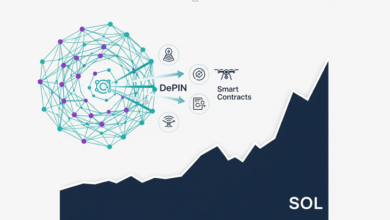Mutf_In: Hdfc_Trsp_Logi_Rlqq2q

Mutf_In: Hdfc_Trsp_Logi_Rlqq2q represents a detailed transaction log from HDFC, capturing essential financial interactions. It provides timestamps, amounts, and account information, which are crucial for customer oversight. This transparency fosters trust and accountability within the banking framework. However, the implications of these logs extend beyond mere tracking. They raise questions about data privacy and customer security, inviting further exploration into how banks manage sensitive information and protect client interests.
Understanding HDFC Transaction Logs
Understanding HDFC transaction logs requires an examination of the data recorded during each financial interaction processed by the bank.
Log analysis reveals various transaction types, including deposits, withdrawals, and transfers. Each entry contains timestamps, amounts, and account details, allowing for comprehensive tracking of financial activity.
This meticulous documentation supports accountability and empowers customers to analyze their banking behavior, promoting a sense of financial autonomy.
The Importance of Transparency in Banking
Transparency in banking is essential for fostering trust between financial institutions and their customers.
By adhering to banking ethics and openly sharing information, banks can enhance consumer trust and accountability. This openness not only mitigates risks but also empowers customers to make informed decisions.
Ultimately, transparency serves as a foundation for a stable banking environment, encouraging ethical practices and fostering long-term relationships.
Implications for Customers and Financial Security
As customers navigate the complexities of the banking sector, the implications of transparency extend beyond mere trust; they significantly impact financial security.
Enhanced customer trust fosters a more open relationship, encouraging individuals to engage in informed financial decisions.
Consequently, improved financial literacy emerges, equipping customers with the knowledge necessary to safeguard their assets, ultimately promoting a more resilient and secure financial environment.
Addressing Data Privacy Concerns
The growing emphasis on customer trust and financial literacy naturally raises significant concerns regarding data privacy in the banking sector.
Effective strategies must incorporate robust data encryption measures to safeguard sensitive information.
Furthermore, obtaining explicit user consent for data usage is essential, promoting transparency and empowering customers to make informed decisions.
Addressing these concerns is vital for fostering a secure banking environment and enhancing consumer confidence.
Conclusion
In a world where financial transparency is heralded as a virtue, HDFC’s transaction logs ironically serve as a double-edged sword. While they empower customers with insights into their financial behaviors, they also expose them to potential data vulnerabilities. The promise of accountability comes with the lurking shadow of privacy concerns, prompting one to wonder if true autonomy can exist in a landscape where every transaction is meticulously recorded. Ultimately, the balance between security and surveillance remains a delicate and contentious issue.




